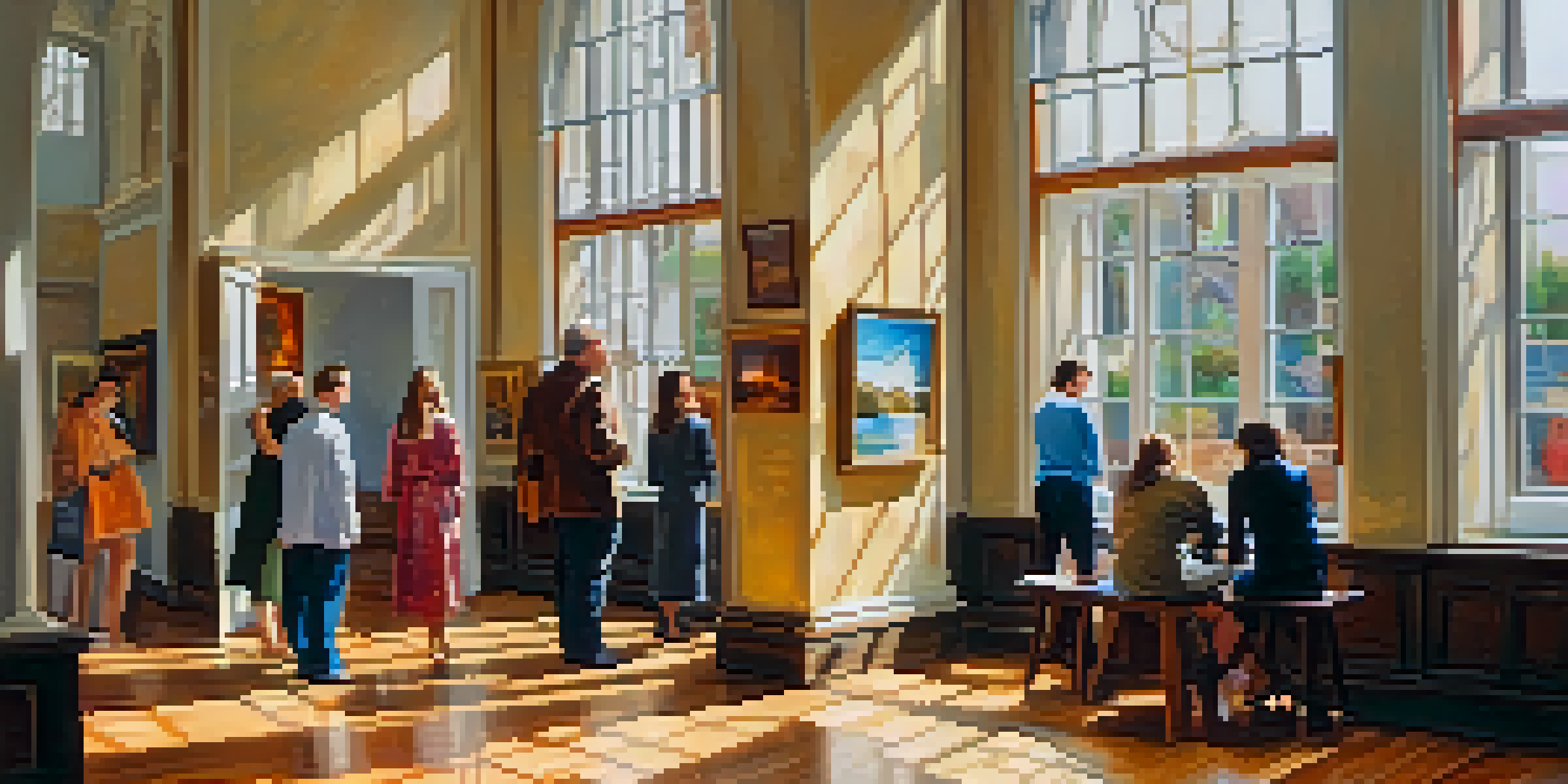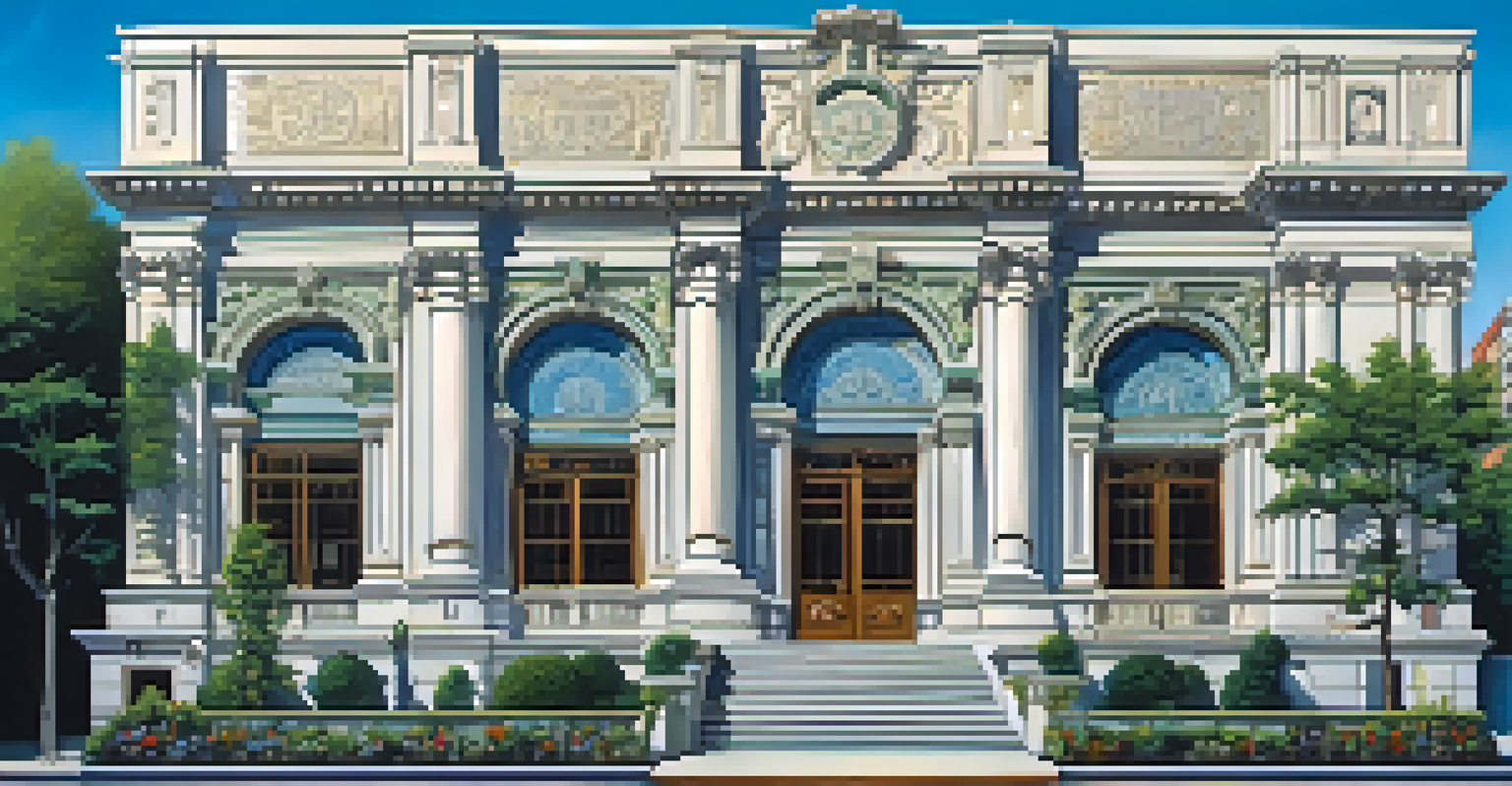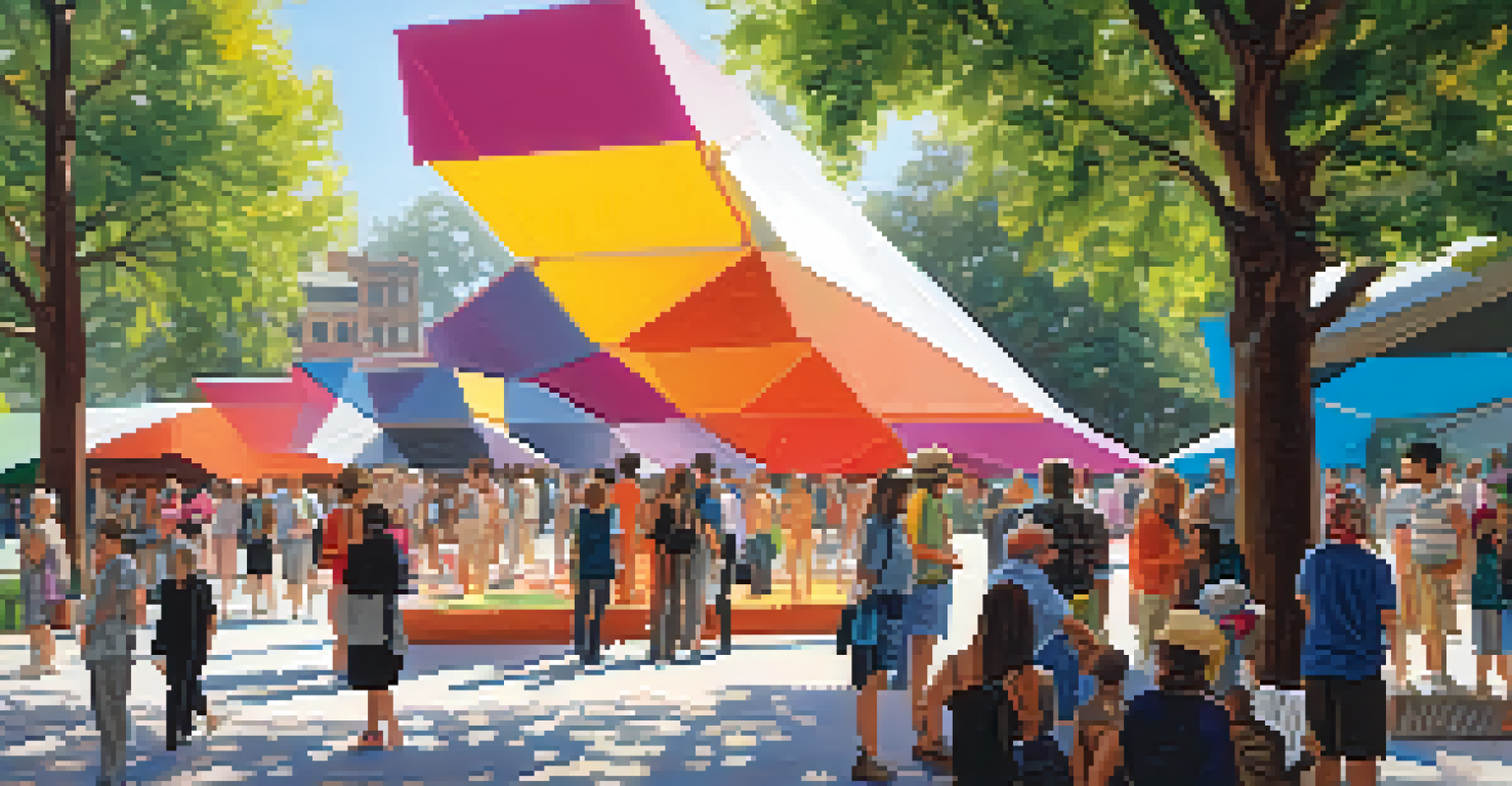The Impact of Art Institutions on Cultural Painting Movements

Understanding Art Institutions and Their Role
Art institutions, such as museums, galleries, and cultural centers, play a crucial role in shaping the landscape of artistic expression. They serve as platforms where artists can showcase their work, connect with audiences, and engage in dialogue. By providing resources and support, these institutions help foster creativity and innovation within various painting movements.
Art is not what you see, but what you make others see.
Moreover, these institutions often curate exhibitions that highlight specific themes or styles, effectively directing public attention to particular artists or cultural narratives. This curation can lead to the elevation of certain styles, allowing them to gain prominence in the art world. For instance, the rise of impressionism was significantly bolstered by exhibitions organized by influential galleries.
In essence, art institutions are not merely passive observers; they actively participate in shaping cultural discourse, making them vital players in the evolution of painting movements.
Historical Context: Art Institutions Through the Ages
To fully understand the impact of art institutions, it is helpful to look at their historical context. From the Royal Academy in London to the salons of Paris, these institutions have been at the forefront of promoting new artistic ideas and movements. They have served as both gatekeepers and champions of emerging styles, influencing what is deemed valuable in the art world.

During the Renaissance, for example, art institutions began to take on a more formalized role, providing artists with the resources and space needed to create. This period saw the establishment of academies, which not only trained artists but also dictated artistic standards. Such institutions laid the groundwork for how art would be perceived and appreciated in subsequent centuries.
Art Institutions Shape Cultural Discourse
Art institutions actively influence artistic trends and cultural narratives through exhibitions and support for artists.
As we moved into the 20th century, the role of art institutions evolved further, responding to societal changes and the rise of new art movements, such as modernism and abstract expressionism. These institutions became vital in legitimizing and promoting avant-garde styles that challenged traditional norms.
Art Institutions and the Promotion of Diversity
In recent years, there has been a concerted effort by art institutions to promote diversity in the art world. This includes showcasing underrepresented artists and exploring cultural narratives that have historically been overlooked. By doing so, these institutions not only enrich the cultural fabric but also inspire new painting movements that reflect a broader range of experiences.
Every artist dips his brush in his own soul, and paints his own nature into his pictures.
For example, initiatives such as community outreach programs and diverse exhibitions have opened doors for artists from various backgrounds. This shift is crucial in creating a more inclusive art world that respects and honors different perspectives. The impact can be seen in the rise of movements that celebrate cultural heritage and identity.
Ultimately, promoting diversity within art institutions encourages a more vibrant and dynamic cultural landscape, allowing innovative painting movements to flourish.
Case Study: The Role of the Museum of Modern Art
The Museum of Modern Art (MoMA) in New York serves as a prime example of how art institutions can influence cultural painting movements. MoMA has been instrumental in promoting modern and contemporary art, often being the first to exhibit groundbreaking works that challenge conventional boundaries. Their exhibitions have played a significant role in shaping public perception and acceptance of new styles.
By showcasing artists like Jackson Pollock and Frida Kahlo, MoMA has not only elevated individual careers but also propelled entire movements into the spotlight. The museum’s willingness to embrace experimentation has encouraged artists to push their creative limits, resulting in a vibrant array of painting styles.
Diversity Enriches the Art World
Efforts to promote underrepresented artists and diverse narratives are vital for creating a more inclusive cultural landscape.
Moreover, MoMA's educational programs and public outreach initiatives help demystify contemporary art, making it more accessible to a wider audience. This accessibility is crucial for fostering appreciation and understanding of evolving painting movements.
Art Institutions and Market Dynamics
The relationship between art institutions and the art market is complex and multifaceted. On one hand, institutions help stabilize and promote the value of certain artworks and artists, often leading to increased market demand. On the other hand, market trends can also influence institutional programming and exhibition choices, creating a feedback loop.
For instance, when a particular style gains popularity in the market, institutions may respond by showcasing related artists or works. This can lead to a cycle where market-driven interests overshadow other important movements. Understanding this dynamic is crucial for artists looking to navigate the evolving art landscape.
Ultimately, the interplay between art institutions and the market can significantly impact which painting movements gain traction and visibility, shaping the future of artistic expression.
The Global Reach of Art Institutions
Art institutions are no longer confined to geographical boundaries; they have a global reach that influences cultural painting movements worldwide. With the advent of technology and social media, institutions can share exhibitions and programs with a global audience, democratizing access to art.
International exhibitions and biennales, such as the Venice Biennale, showcase diverse artists from around the world, highlighting various cultural narratives. This global perspective allows for cross-pollination of styles and ideas, resulting in new and exciting painting movements that draw from a variety of influences.
Global Influence of Art Institutions
Art institutions now have a global reach, fostering cross-cultural exchanges that lead to innovative painting movements.
Moreover, collaboration between institutions across countries fosters dialogue and understanding, enriching the artistic landscape. This interconnectedness underscores the importance of viewing art as a global conversation rather than a series of isolated movements.
Future Directions for Art Institutions and Painting Movements
Looking ahead, art institutions face the challenge of staying relevant in a rapidly changing world. As societal values shift, institutions must adapt their programming to reflect contemporary issues and engage with diverse communities. This evolution will likely lead to the emergence of new painting movements that resonate with current cultural dynamics.
Additionally, as technology continues to advance, institutions will need to explore innovative ways to present and engage audiences with art. Virtual reality, augmented reality, and digital exhibitions are just a few examples of how technology can enhance the experience of viewing art.

By embracing change and prioritizing inclusivity, art institutions can continue to play a vital role in shaping cultural painting movements, ensuring that they remain vibrant and reflective of our ever-evolving world.